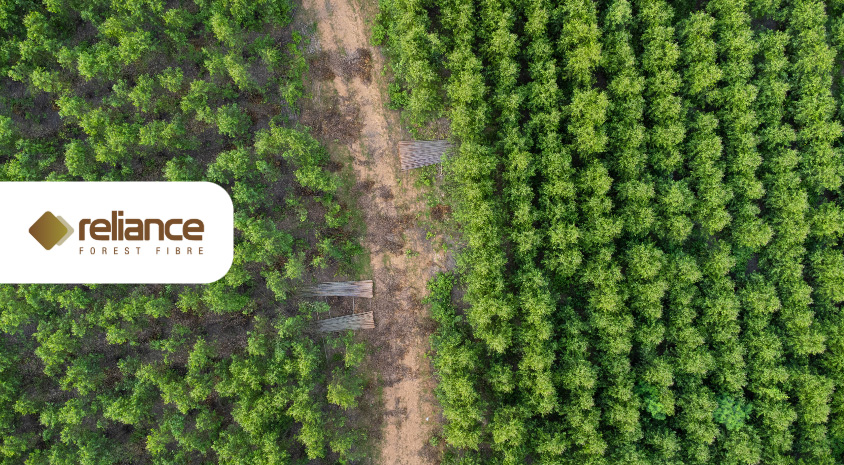Connected cloud technologies are unlocking new opportunities to improve visibility, collaboration and efficiency in operational planning. What’s driving the need for digital transformation of forest operations? Here are some key takeaways from a Remsoft webcast, and the top opportunities for improvement.
With a pragmatic approach that targets your key improvement objectives, digitalizing forest operations can empower decision makers – from analysts to business users and front line – with the data and tools they need to improve business performance.
Integrate Data and Systems
Start by integrating what you already have. Often the critical information that you need to make time-sensitive decisions exists in separate and unconnected spreadsheets, schedules and systems. By connecting your existing data within one comprehensive platform, you can coordinate supply chain activities in a way that facilitates seamless information flows.
Then new information, such as data collected by smart devices in the field in real-time, can be integrated from your business systems on a frequent and scheduled basis. The result? Improvements in operational efficiency, reduced bottlenecks and operational costs, increased productivity and margins, and highly detailed insights into every element involved in your operations, from the forest to the mill.
With a unified, cloud-based view of forest operations – in real-time – anyone can find answers, quickly and unassisted. With this type of high supply chain visibility, operations managers can strategize more effectively, making their supply chain more efficient, sustainable, and profitable.
Employ Deep Insights
Identify and target operational bottlenecks that are causing lost productivity and higher costs. The forestry supply chain is dynamic and complex. Planners need to manage harvest units, product levels, crew and fleet assignments, harvest and transportation costs, and productivity, along with customer demands, price forecasts and revenues – all over an evolving multi-season time horizon. Biological assets can present added challenges due to market changes, environmental factors, operational obstructions, and other considerations.
Deep analytic insights and decision support can help manage this complexity. Seeing problems ahead of time allows for mitigation strategies to be put in place before the problems occur. Instantly viewing and analyzing the impact of changes to harvest and delivery schedules helps identify the best path forward. And real-time decision support platforms that can automatically update all parts of a plan when an edit is made, maximize productivity and greatly reduce the possibility of human error.
Optimize the Supply Chain
Leverage the science and power of optimization analytics to increase effectiveness across your supply chain from fleet assignments to road-side inventory and delivery schedules. Using available data as a starting point, you can integrate advanced optimization analytics directly into your operational forest planning systems.
Optimization finds the best solution, a vast improvement over human intuition that cannot consider all the variables. And because it is connected with the freshest business data, you can optimize when needed and get answers within hours and even minutes. Optimization agility is enabled through this connectivity.
The benefits are substantial: less manual work required to meet delivery targets and commitments; minimized transportation costs, and schedules that can be generated instantly as new data becomes available.
And there are more benefits on the way. Integrated optimization applications for harvesting and procurement, log allocation, and annual Sales and Operational planning will modernize the forestry supply chain and unlock industry-wide value.
Integrate GIS into Planning Workflows
Enable spatial analytics to see geographic attributes like roads, slopes, and proximity. By synching with geographic information systems (GIS) and spatial databases, planners can relate tabular data into digital maps and consider their options in a spatial environment.
Planning informed by spatial intelligence leads to better decisions and smarter supply chain forest management planning by harnessing the analytical power of GIS to develop harvest schedules, delivery schedules, project future timber supplies, and balance land-use policies.
Embedded web mapping platforms provide users with quick and direct access to view plans on maps – simplifying scheduling, identifying efficiencies, and effectively managing costs.
Leveraging the capabilities of spatial analytics technology, users can see the full perspective of their plan in relation to the Earth in order to make decisions that are cost-effective and environmentally sustainable.
Looking Ahead
With increased visibility and improved collaboration, empowered by real-time access to data and intelligent analytics, you can unlock future value across your supply chain.
Building a unified database and archival history can dramatically enhance forest operations. Artificial intelligence can be applied to data to look for patterns and provide deeper insights.
Mining these insights to drive future activities, forestry companies can innovate and transform their operations by looking at past models and trends to make predictions that improve future plans and schedules.
LEARN MORE:
- Get an overview of Remsoft Operations and our integrated, cloud-based capabilities for forest operations planning and scheduling in one view.
- Watch the full webcast on How to Gain Real-Time Visibility and Improve Decision Support Across Forest Operations.




